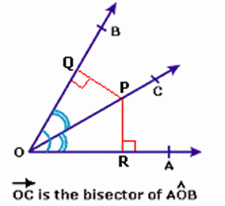|
Basics of Geometry
|
|||
|
|
|||
|
Session: |
|||
Angles: When two straight lines meet at a point they form an angle. In the figure, the angle is represented as ∠AOB. OA and OB are the arms of ∠AOB. Point O is the vertex of ∠AOB. The amount of turning from one arm (OA) to other (OB) is called the measure of the angle (AOB).

Right angle: An angle whose measure is 90o is called a right angle. ∠ BOA is a right angle in the figure.
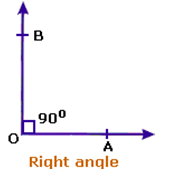
Acute angle: An angle whose measure is less then one right angle (i.e., less than 90o), is called an acute angle.
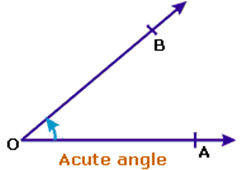
Obtuse angle: An angle whose measure is more than one right angle i. e. 90o and less than two right angles
(i.e., less than 180o and more than 90o) is called an obtuse angle.
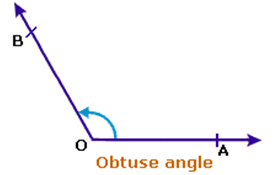
Reflex angle: An angle whose measure is more than 180o and less than 360o is called a reflex angle.
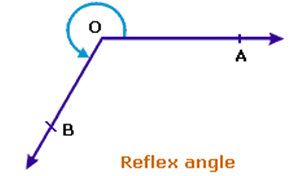
Complementary angles: If the sum of the two angles is one right angle (i.e., 90o), they are called complementary angles. Therefore, the complement of an angle θ is equal to 90° − θ. ∠AOC & ∠ COB are Complementary angles.
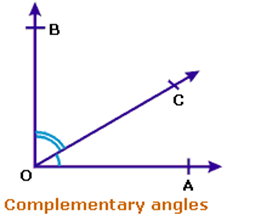
Supplementary angles: Two angles are said to be supplementary, if the sum of their measures is 180o. Here ∠BOC & ∠ COA are Supplementary angles.
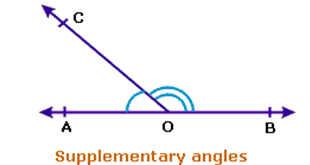
Example: Angles measuring 130o and 50o are supplementary angles. Two supplementary angles are the supplement of each other. Therefore, the supplement of an angle θ is equal to 180° − θ.
· The sum of all the angles round a point is equal to 360°.
· If two lines intersect, then the vertically opposite angles are equal.
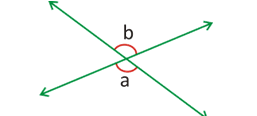
Angle a = angle b (vertically opposite angle)
· If a transversal intersects two parallel lines, then each pair of corresponding angles are equal.
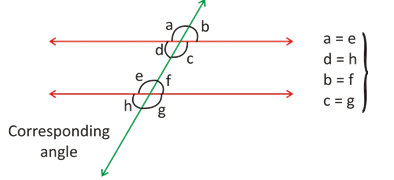
· Other facts :
1. Linear pair :
a + b = 180°
2. Vertical opposite angles:
a = c & b = d e = g & f = h
3. Alternate angles:
c = e, d = f
4. Sum of Interior angle is always 180°:
c + f = d + e = 180°
Bisector of an angle: If a ray or a straight line passing through the vertex of that angle, divides the angle into two angles of equal measurement, then that line is known as the Bisector of that angle.
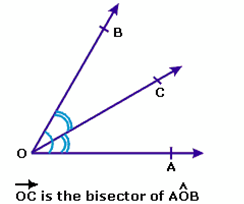
A point on an angle is equidistant from both the arms.
In the figure, Q and R are the feet of perpendiculars drawn from P to OB and OA. It follows that
PQ = PR.
